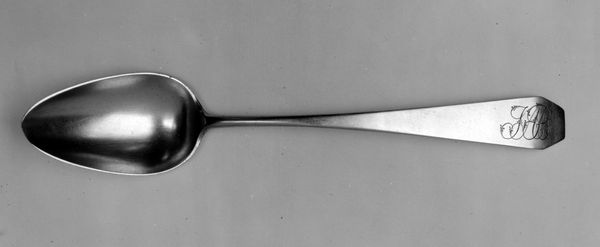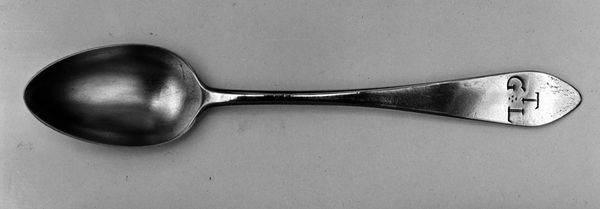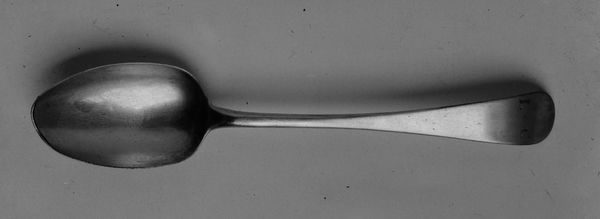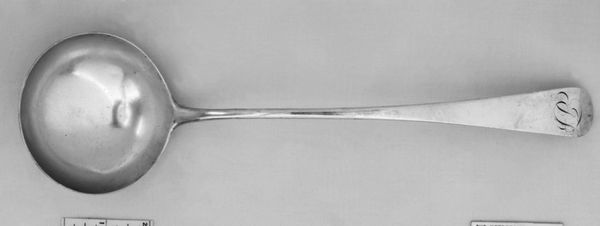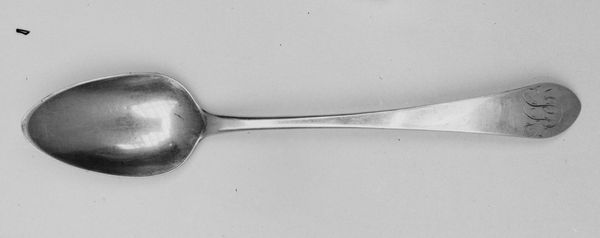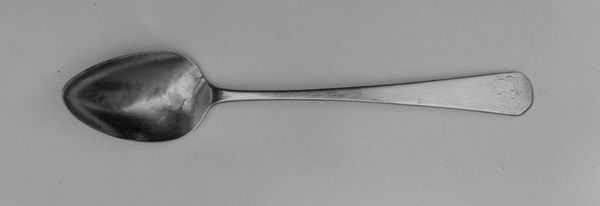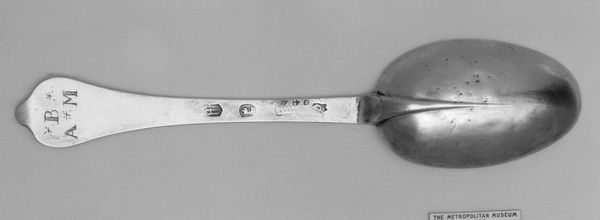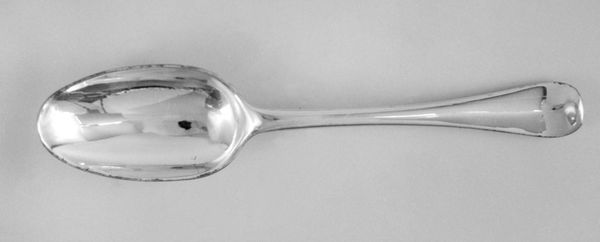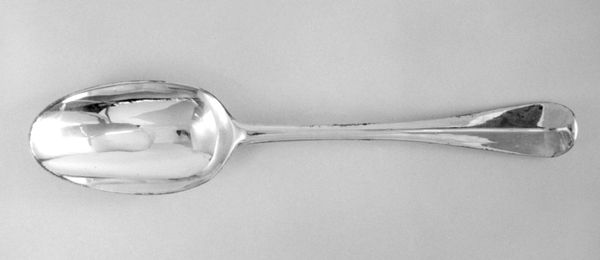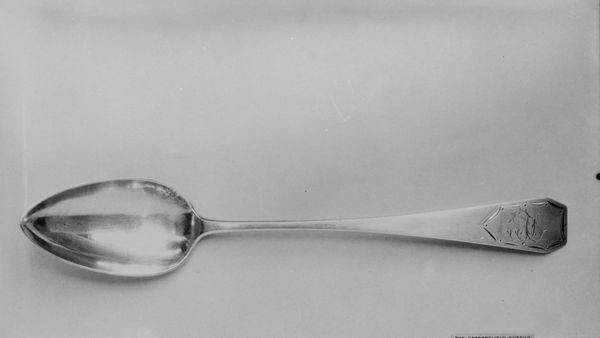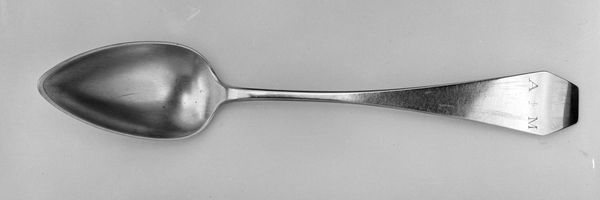
silver, sculpture
#
silver
#
sculpture
#
classical-realism
#
geometric
#
sculpture
#
decorative-art
Dimensions: L. 5 1/2 in. (14 cm)
Copyright: Public Domain
Curator: Allow me to approach this Tea Spoon from a formalist viewpoint. Consider the object: its materiality, form, and inherent properties. Editor: Right, so this is a silver teaspoon, dating from around 1800 to 1830. It's at the Met. What I find interesting is the contrast between the smooth, rounded bowl and the flat, geometric handle. How do you interpret this contrast? Curator: Precisely. It is the interplay between these distinct forms that is crucial. Notice the subtle curvature of the spoon's bowl against the sharp, rectangular termination of the handle. It creates a tension, doesn’t it? Editor: Yes, it does. And the engraved decorations – the wavy lines and the monogram within a diamond – they add another layer. Are those purely decorative, or do they have structural significance? Curator: That’s a astute question. Structurally, these engraved elements provide visual texture. They interrupt the otherwise planar surface of the handle, influencing how light reflects, defining its character. Editor: So, the formal aspects override any symbolic meaning the monogram might have? Curator: Indeed. The emphasis here lies on the visual relationships and the dialogue between form and surface, line and volume. One is not necessarily drawn to an overarching message about who "L" is/was, rather their eye may find its own adventure among form and line. Editor: I see. So by analyzing the forms and materials themselves, we can understand the aesthetic principles at play, regardless of historical context. Curator: Precisely. Our gaze can instead celebrate form, texture and material, divorced from function or intention. The pleasure rests within purely formal dynamics.
Comments
No comments
Be the first to comment and join the conversation on the ultimate creative platform.

